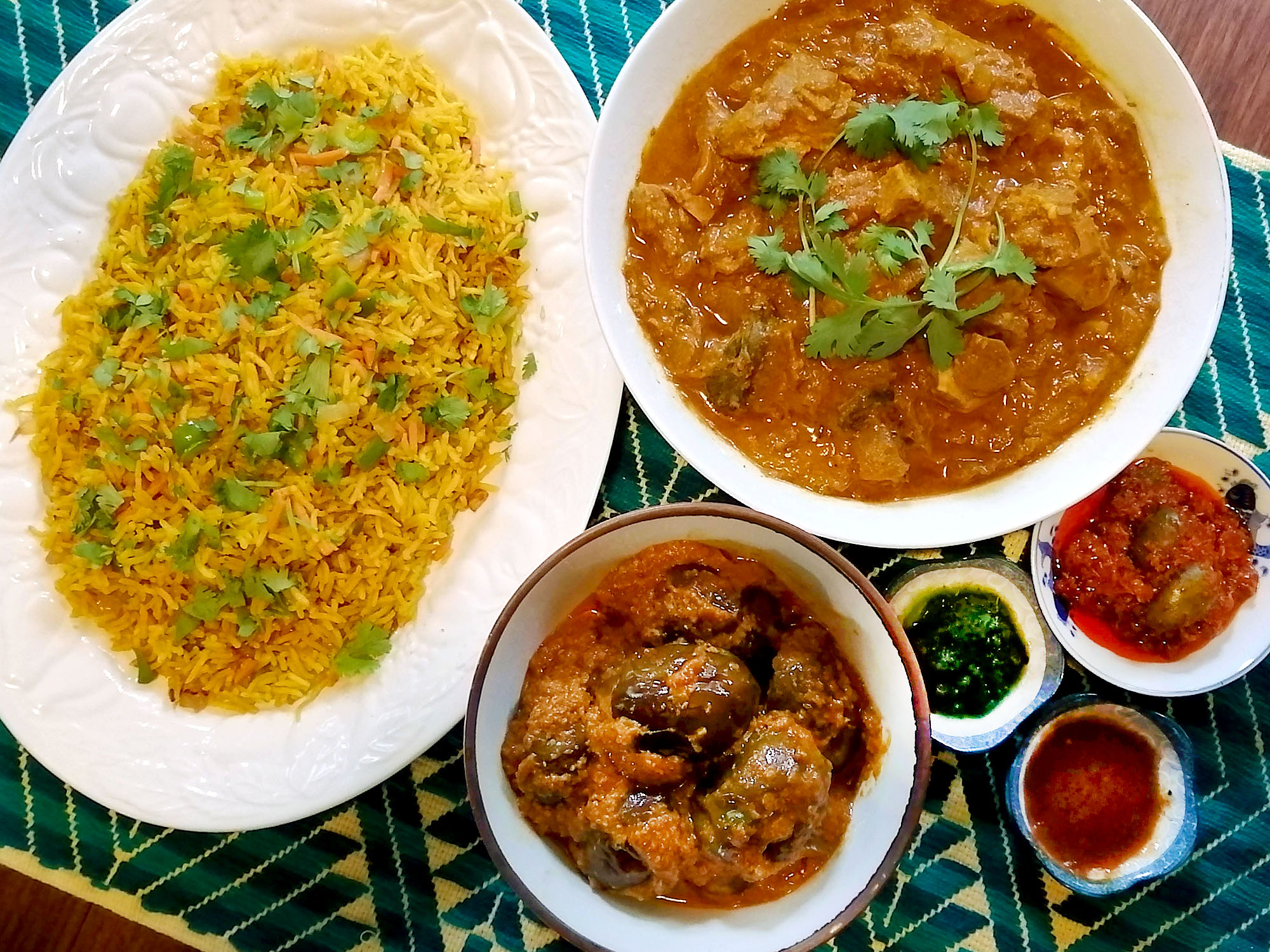I’ll be the first to admit that I love to eat, so it was a no-brainer for me to make the connection between eating and cooking early in my life. Don’t get me wrong, if I could afford to hire a personal chef to cook for me, I would. Since that’s not possible, the next obvious step for me was to learn how to cook for myself.
In the beginning, hunger was my motivation. Later, as I tasted the incredible variety of what’s available to eat out there, curiosity took over. So I made a rule for myself: I would never order the same dish at the same restaurant twice. If I really liked a dish, I would seek out another restaurant that served a similar dish and try their version; how else would one know who does it best? And if I really really liked a dish and really wanted to eat it again and again, I would have no choice but to teach myself how to make it at home.
Recently, I had an excellent dinner at Himalayan Chimney and tasted their version of Indian goat curry. The potent flavors of the curry left a lovely taste in my mouth which also lingered in my mind. Like an addict needing his next fix, I pined to taste that goat dish again, so I decided to recreate this dish at home. Goat meat is celebrated in most of the world except in the United States. If you like lamb, you’ll also like goat. The gamey, pungent flavor of goat makes beef and pork taste bland in comparison. In other words, if you like your meat to taste like meat, you can’t go wrong with goat.
Unfortunately, goat meat is hard to come by in Champaign-Urbana. Frozen goat is available at African and Mexican grocers, but it’s expensive. The University of Illinois Meat Science Lab offers goat only once a year, but our little Bombay Market on West Bradley Avenue gets fresh Halal goat meat from Chicago every Thursday.
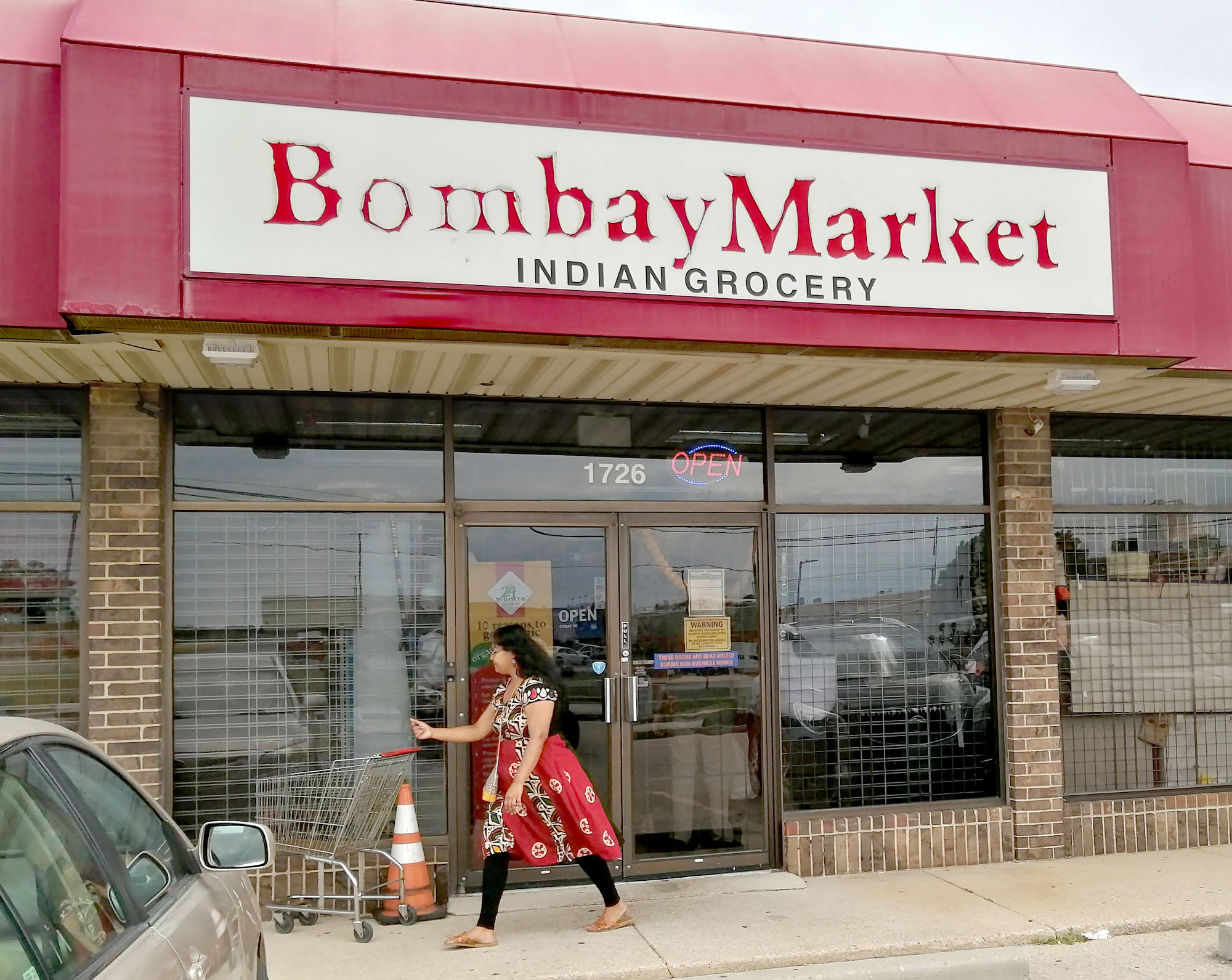
Photo by Paul Young.
At about $12 per pound, it’s quite affordable. In fact, you can even pre-order exactly the cut that you want ahead of time by contacting Pappu, the owner. For my goat stew, I opted for two pounds of boneless leg meat.
Since the movie was going to be a three-hour-plus Indian epic, what I had in mind for dinner was a multi-course Indian feast to whet our appetite for a event movie like RRR. While I was picking up my goat meat, I surveyed Bombay Market for other goodies to fill out the meal.
Here’s what I found.
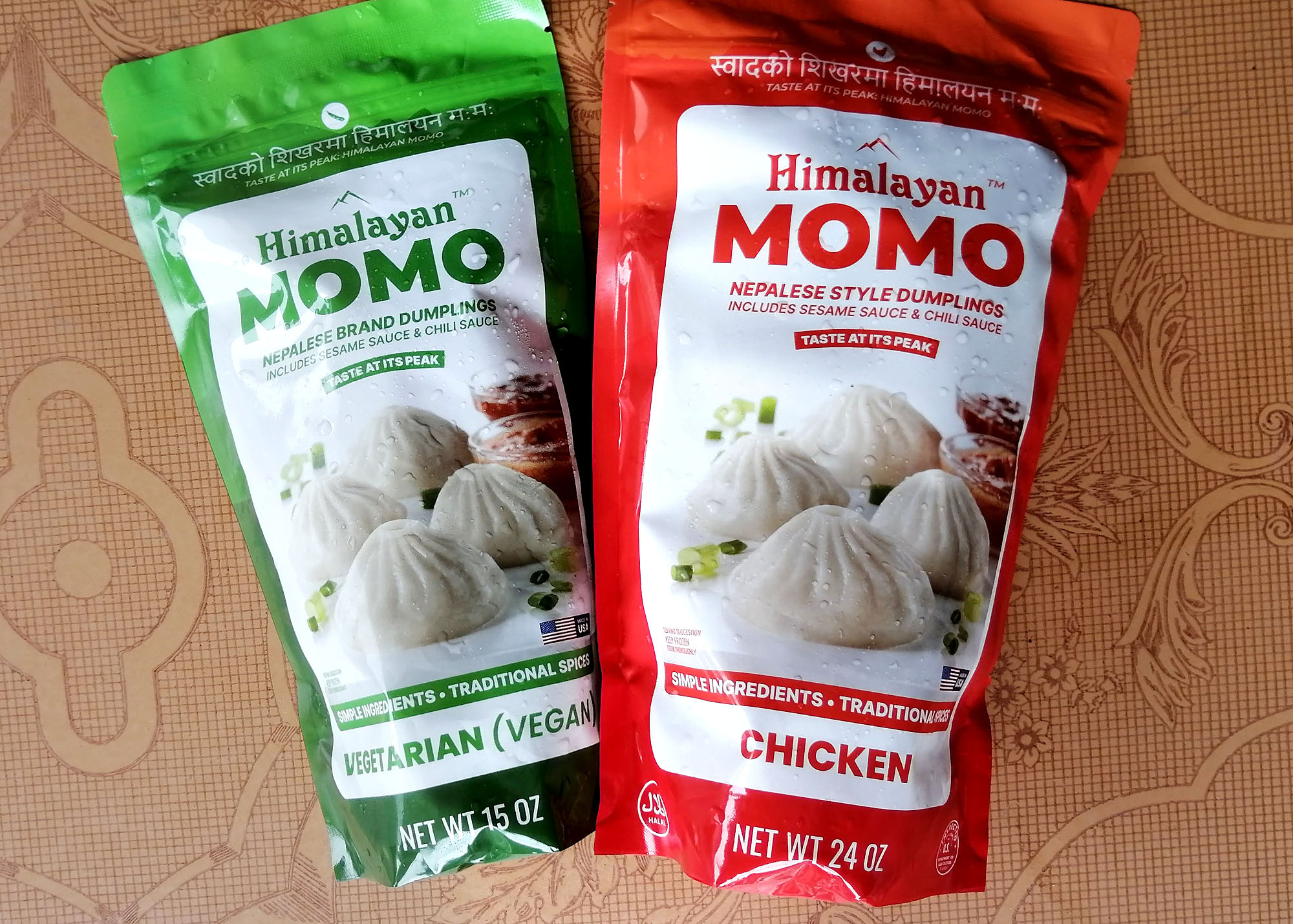
Photo by Paul Young.
In the freezer section they had ready-made Nepalese dumplings which we haven’t had since our trip to Gangtok in 2011 ($8 to $11 per package depending on weight). These mouth-watering little dumplings were very similar to Chinese steamed dumplings but were made with exotic Indian spices like cumin and turmeric.
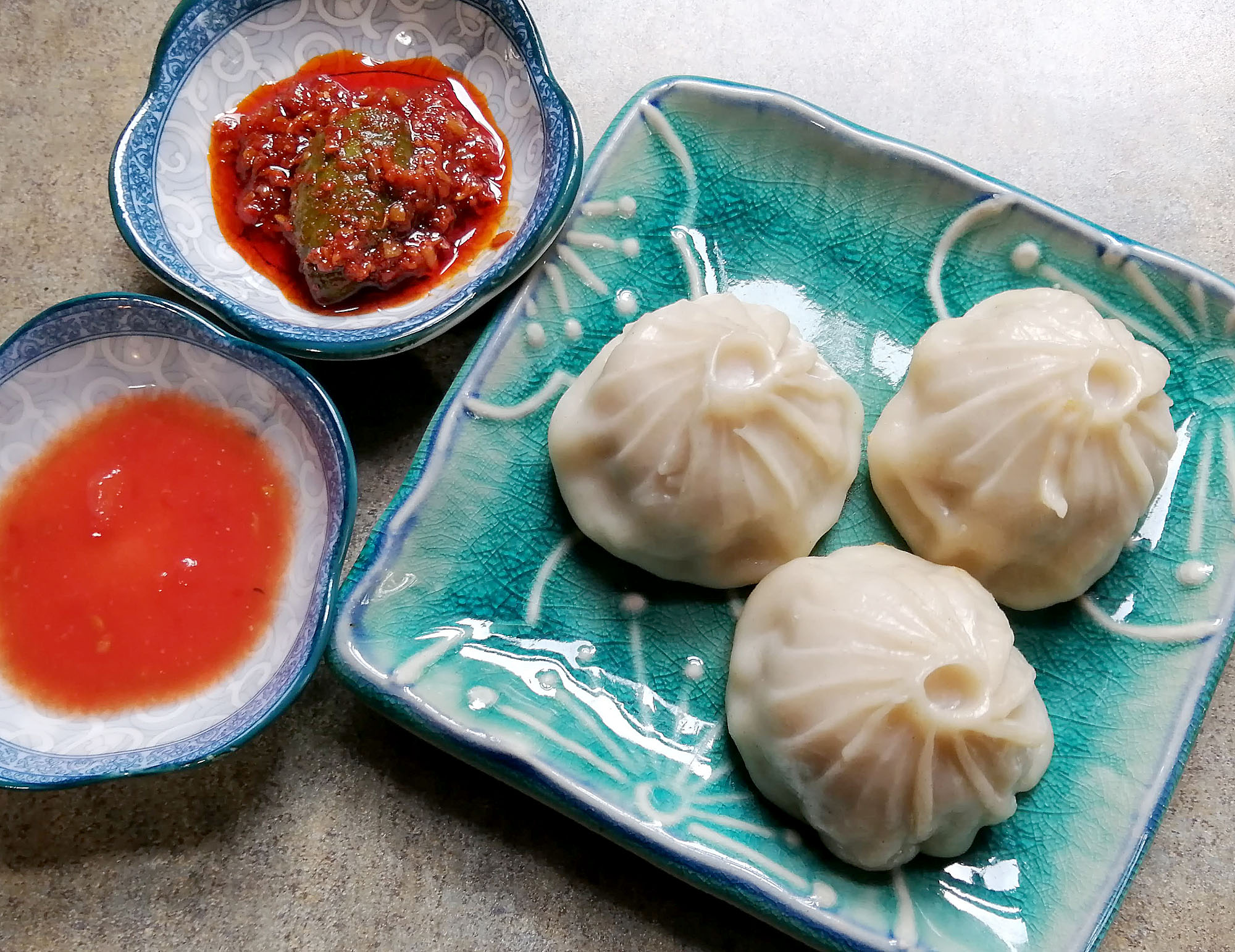
Photo by Paul Young.
The frozen dumplings can go directly from the freezer to the steamer, and after about 20 minutes, they were ready to eat. Served with some sweet and spicy dipping sauce (included in the package) and maybe add a chutney or two, and you’ve got a juicy and tasty appetizer.

Photo by Paul Young.
In the refrigerated section, I spotted an entire shelf of colorful Indian sweets that looked irresistible (about $9 for a one-pound container). This was almost like exploring Chicago’s Devon Avenue sweet shops and stocking up on these hard-to-find sinful delights. Each of these super-sweet morsels were a delight but also very filling. Our dessert for the evening was all set.
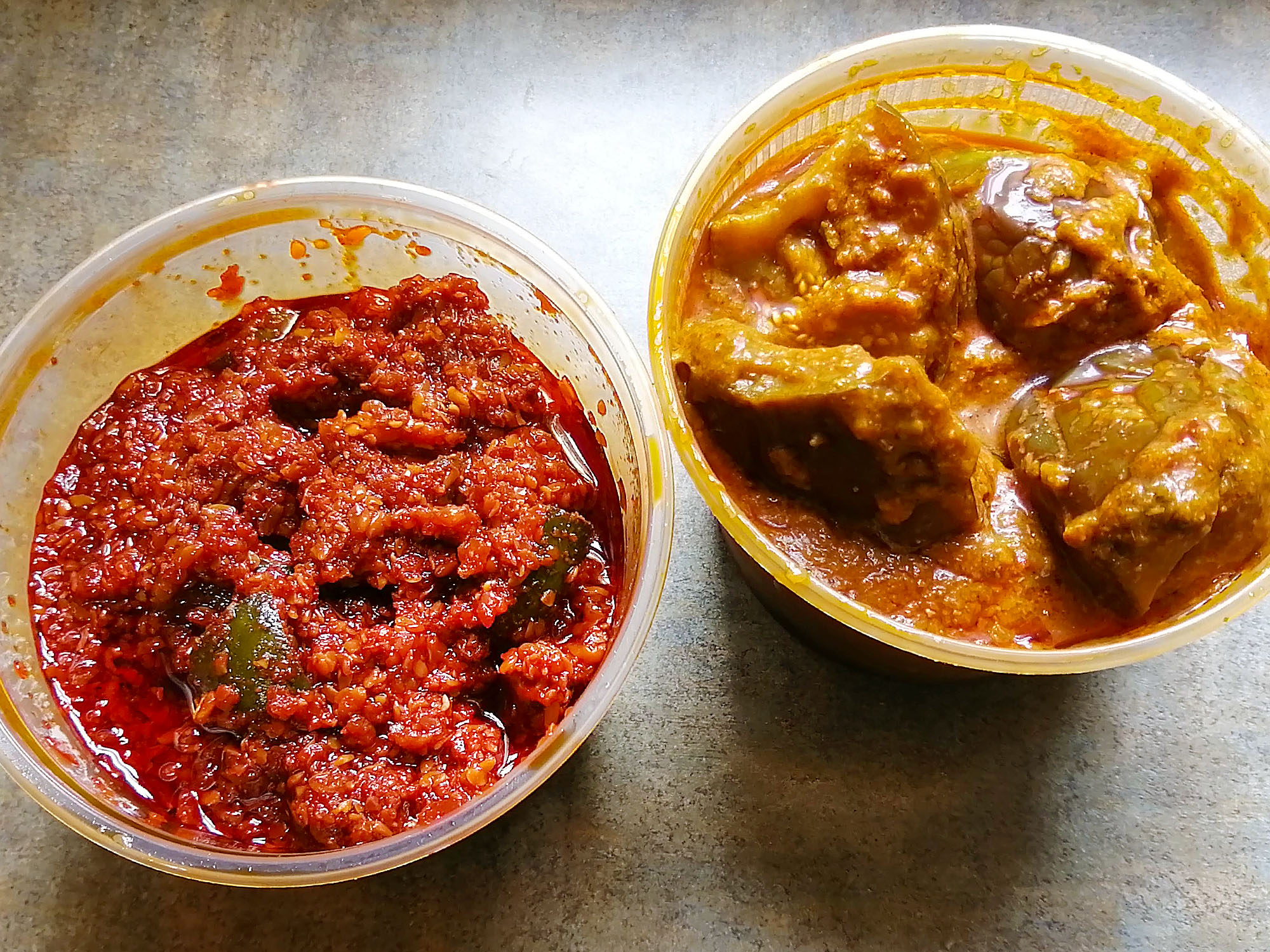
Photo by Paul Young.
Next to the sweets were containers labeled with a handwritten script that spelled out some variation of baingan brinjal which turned out to be a ready-to-eat eggplant dish made with those cute little round Indian eggplants simmered in a well-spiced but mild curry sauce ($4 per pint). Black magic marker handwriting means house-made in my experience, and at the check-out counter, I spotted their version of freshly-made mango pickles ($6 per pint) which was a spicy and tangy chutney that enhanced just about any Indian dish. Yes, I’ll take one of each.
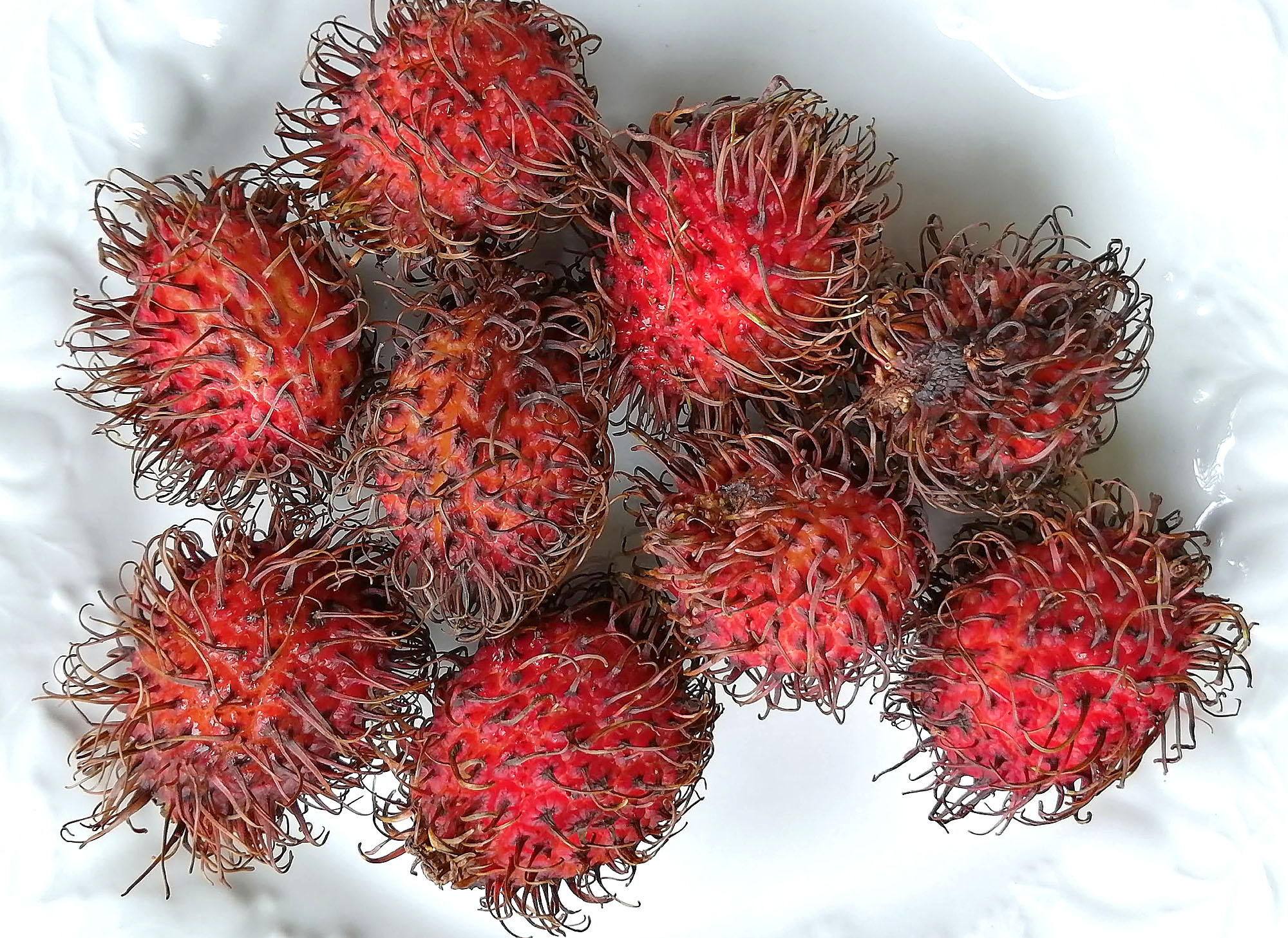
Photo by Paul Young.
Bombay Market also has a robust produce section where I spotted these cute little rambutans. Like lychees and longans, these perfumed little succulent fruits are so much better fresh than canned and soaked in sugar syrup. Since they’re in season, I had to grab a bunch ($8 per pound) for our post-movie snack.
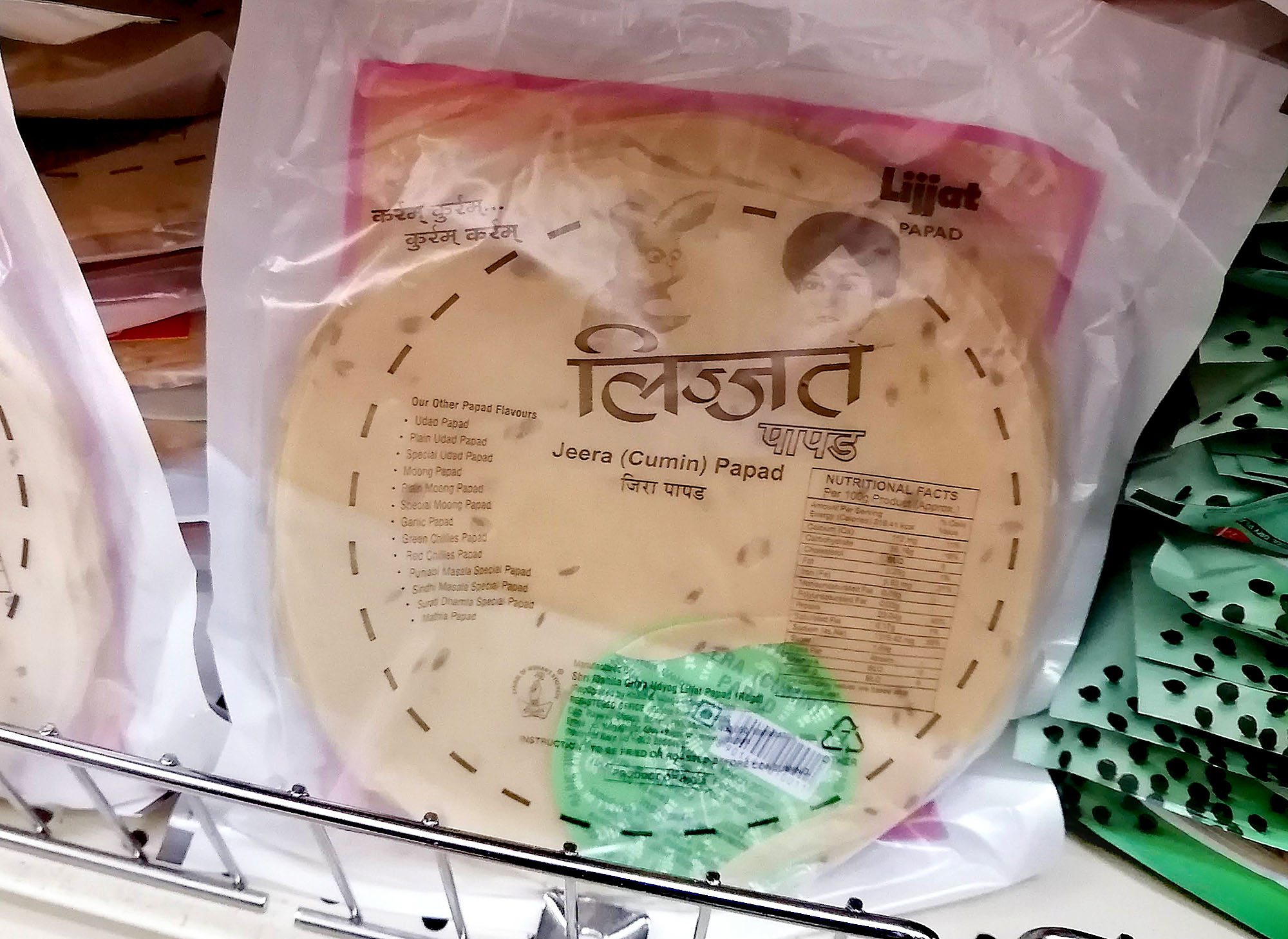
Photo by Paul Young.
On a shelf, I found some papadums I could cook up as a pre-appetizer starter ($2.50 for a package of 12). This brought back memories from our days in New York City when our favorite Curry Row restaurant joints served up these crispy tasty crackers with a sweet onion chutney for free as soon as we sat down.
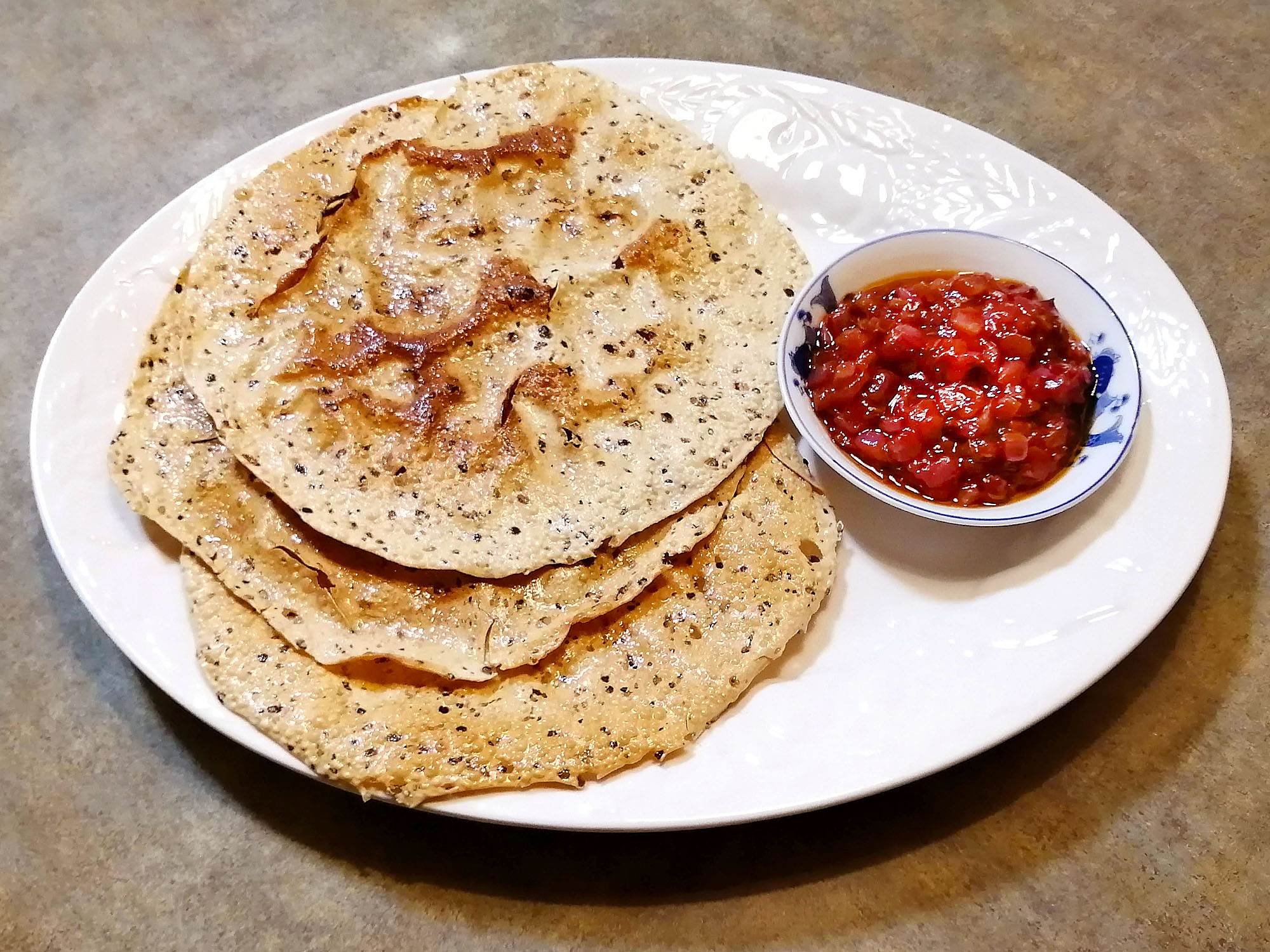
Photo by Paul Young.
Our Indian feast was all set. We planned to start with papadums as a beer snack, move on to momos as an appetizer, have the goat stew as the main dish with a side of curry eggplant, followed by a plate of sweets for dessert, and maybe some rambutans after the movie. The only thing missing was a rice dish to soak up all that curry sauce, so I opted to also add a rice cooker biryani dish to our menu. Biryani is basically a savory Indian rice pilaf, and it’s so much easier to make if you do it in a rice cooker.
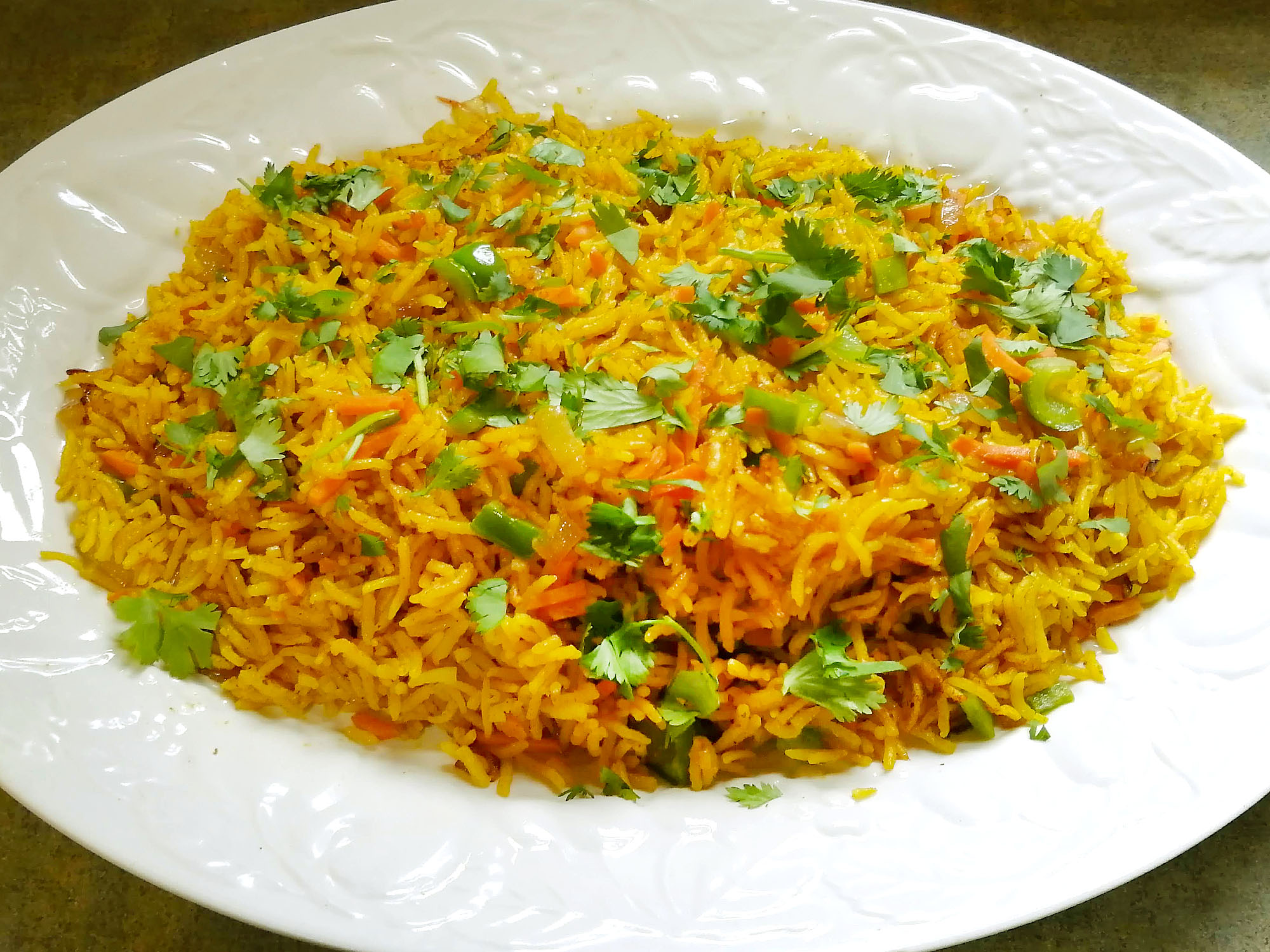
Photo by Paul Young.
I love making stews which is why I also own a pressure cooker which can cut the meat stewing time down to 45 minutes instead of hours. While the meat is stewing, I made the curry “sauce” in a separate pan and then combined the two just before serving.
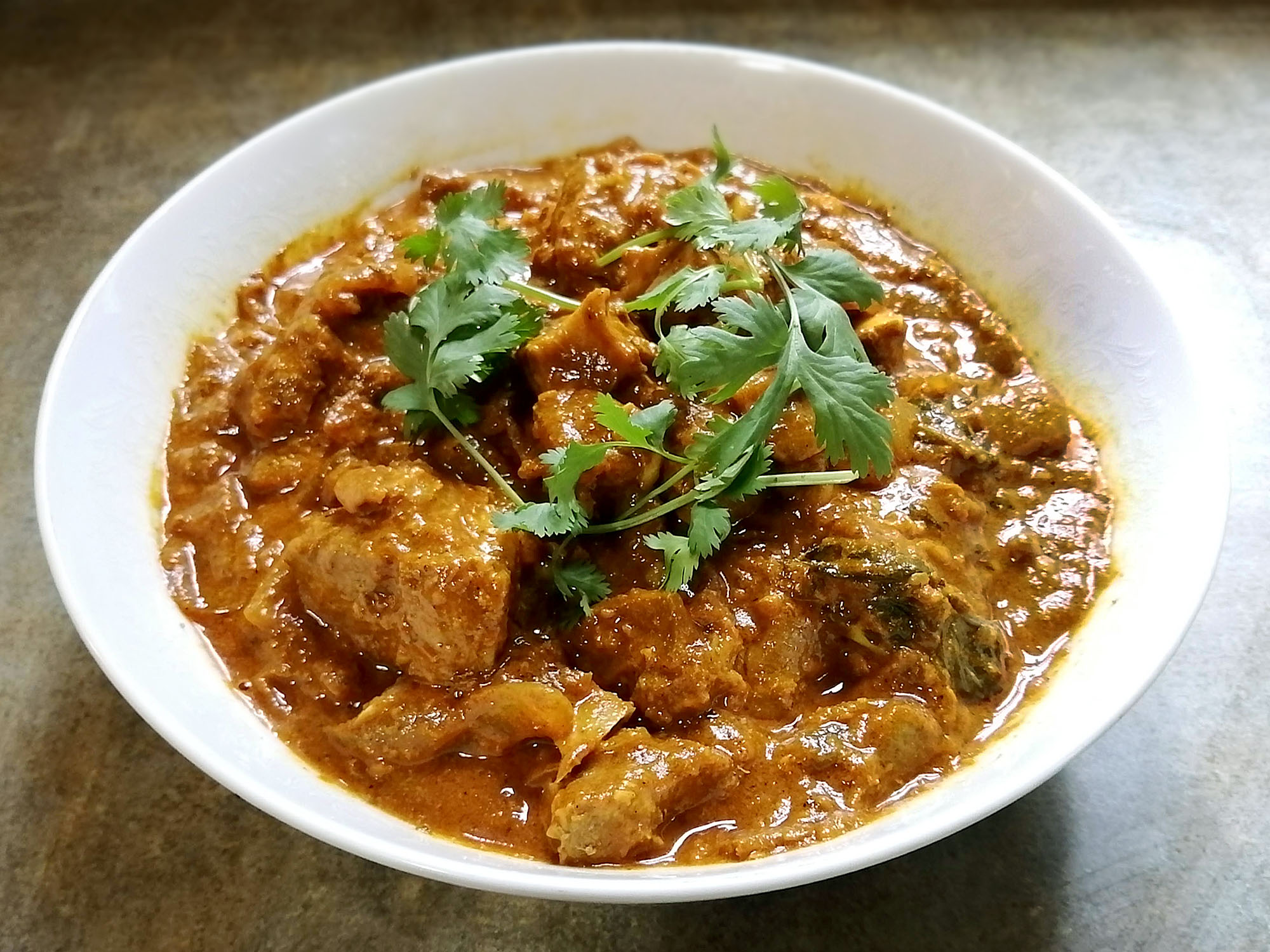
Photo by Paul Young.
The word curry can mean different things in different cultures. In India, curry dishes are “wet,” which just means that the spices are infused in a sauce made of a ton of overcooked and caramelized onions. The classic Indian garam masala spice mix is always a good starting point for flavoring curries, but each curry dish might demand the addition of other spices as well. For this goat stew, I opted to try a Nepalese recipe which called for tomatoes and serrano peppers in addition to the requisite garlic and ginger. When the curry sauce was combined with the meat, there was an alchemical reaction where the flavors all melded together into a heavenly stew with the meat so tender and flavorful that one will want to eat it slowly in order to fully enjoy its uniquely spiced gamey taste.
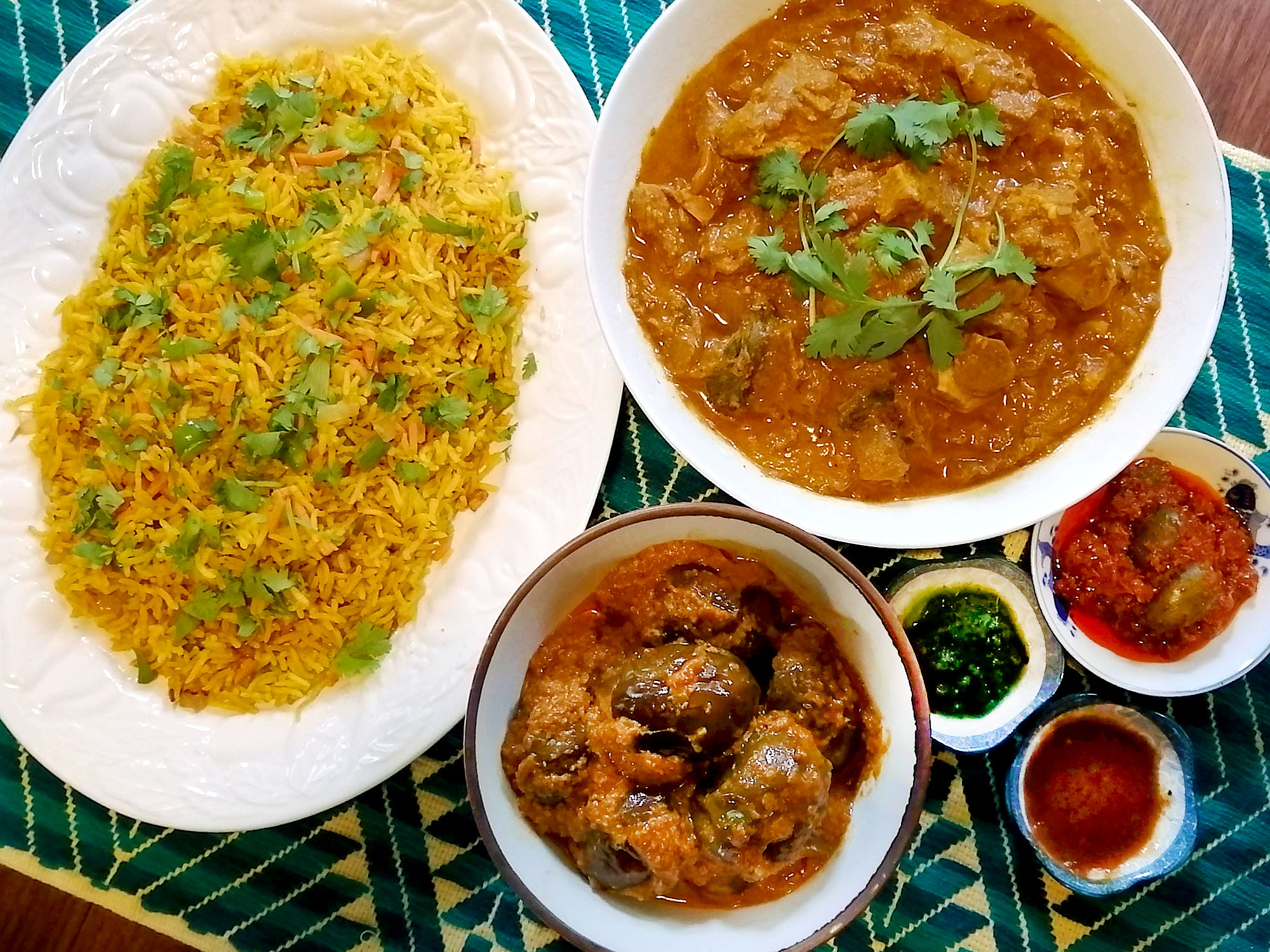
Photo by Paul Young.
After dinner, it was time to enter the magical world of Indian popular cinema. India is a huge country, and its movie industry is just as varied as its cuisine. Even though the Indian government officially recognizes 22 languages, Hindi is by far the most dominant. Therefore it’s no wonder that Hindi-language films produced in Bollywood (as in Bombay, the colonial name for the city of Mumbai) dominated the Indian film industry for decades. That is until 2021, when Tollywood movies filmed in the Telugu language took over the country with bigger budgets and larger box office grosses.

Photo by Netflix.
Since Netflix is an international streaming service, there are hundreds of Indian movies streaming on the platform at any given time. However, recently one Indian movie rose to the top and became the most watched Indian film on Netflix by hitting the platform’s top 10 list in 62 countries. The movie is hit-maker S.S. Rajamouli’s latest Tollywood hit called RRR, also known for having the biggest budget for an Indian movie to date. Bollywood aficionados already know that popular Indian movies are long (usually over three hours), have spectacular musical dance numbers, and contain elements of drama, comedy, as well as action — in other words, they’re mash-ups of multiple genres that always gives the audience their money’s worth. RRR is no different, but adds one more element — the spectacular use of digital visual effects that puts Industrial Light and Magic to shame. Contrary to popular belief, Rajamouli actually uses digital tools with restraint and prefers to film on real sets with thousands of real flesh-and-blood extras that recall eye-popping Hollywood spectacles like D.W. Griffith’s Intolerance, but when he does introduce digital effects, he does it without restraint, elevating his movies from merely fantastical to legendary.
At its core, RRR is an action film, a genre known for upping the ante with every new release resulting in way way over-the-top storylines, gravity-defying stunts, spectacular chase sequences, and ever more outrageous superheroes and supervillains. But RRR is more than that — to make things even more interesting, Rajamouli obviously studied the best stunt choreography from Hong Kong, Hollywood, and Luc Besson’s best films, then told the visual effects supervisor to supersize every action set piece. The resulting movie is a spectacularly satisfying historical Indian superhero action/drama/musical filled with a ton of energy and excitement to spare. It’s a fiery, awe-inspiring live-action cartoon that Hollywood has tried to make but failed time and time again.
Still not sure you want to see it? Try to imagine Abraham Lincoln as Iron Man, now bring in Alexander Hamilton as Batman and make them moral enemies, but set it all in 1920s colonial India. What? Don’t think DC and MCU should mix? Then this movie is not for you.
But be warned, there is one small road block you’ll have to overcome in order to thoroughly enjoy this and other Indian movies. Indian popular cinema tends to utilize an acting style the West abandoned decades ago. In the days of silent movies, film actors utilized the exaggerated gestures of stage theatrical traditions (like the clichéd overly dramatic death scene). As mise en scène and close-ups became part of our film language, actors learned to be subtler with their facial expressions and body language — so much so that in modern Western cinema, just a glance can speak volumes. Not so with Indian cinema. Every melodramatic moment, every telegraphed emotion is played at full tilt without restraint. What we might consider “bad” acting is just the cultural norm in popular Indian cinema. It’s like eating spicy food — you might think it’s too much the first time around, but once you get used to it, it really adds a lot to the enjoyment of your dinner.
For me, the most satisfying parts of RRR are the director’s use of twisted British caricatures. RRR has a very patriotic anti-colonial political message, and Rajamouli pulls out all the stops to make the British look weak, stupid, cruel, and grossly evil. Hollywood did the same with Blacks and Asians for decades, depicting them as one-dimensional cardboard characters that were always inferior to whites. In RRR, Rajamouli has turned the tables with a vengeance giving the British the ass-kicking they so deserved for decades of cultural bullying. What fun to finally see the British get their due, but don’t laugh too hard — we’re way overdue to be the next colonial culture to be mercilessly skewered by a daring international director.
Rajamouli might be the polar opposite of Satyajit Ray, India’s most respected film director who won international festival awards with works like his Apu Trilogy. Where Ray uses restraint, Rajamouli paints with the broadest brush possible and is fearless when it comes to glorious excess. While Ray is quietly observant, Rajamouli is unapologetically loud and in-your-face. In his world, too much is not enough which is why his movies are exhilarating experiences to be absorbed with all your senses. I’ve been to India, and in my opinion, Rajamouli reflects the extreme and contradictory nature of modern Indian culture much more authentically than Ray.
The Hindi language version of S.S. Rajamouli’s RRR (Roudram Ranam Rudhiram or Rise Roar Revolt) is currently streaming on Netflix by subscription. In an unusual move, Netflix is streaming the IMAX open matte version of RRR which shows more image height than the cropped widescreen theatrical release. After watching RRR, you might also want to stream Rajamouli’s previous blockbusters Baahubali and Baahubali 2 which are also available on Netflix. As a follow-up, amateur cultural anthropologist film sleuths might want to seek out David Lean’s A Passage to India (1984) which offers a contrasting and apologetic British perspective on colonialism in India that’s set around the same time period as RRR.
Bombay Market
1726 W Bradley Ave
Champaign
M-Sa 10 a.m. to 8 p.m.
Su 11 a.m. 7 p.m.
When he is not watching one film a day, Paul Young likes to travel the world seeking good things to eat. So far, he has eaten his way through 25 countries, and he loves to share his culinary discoveries with cooking classes.








